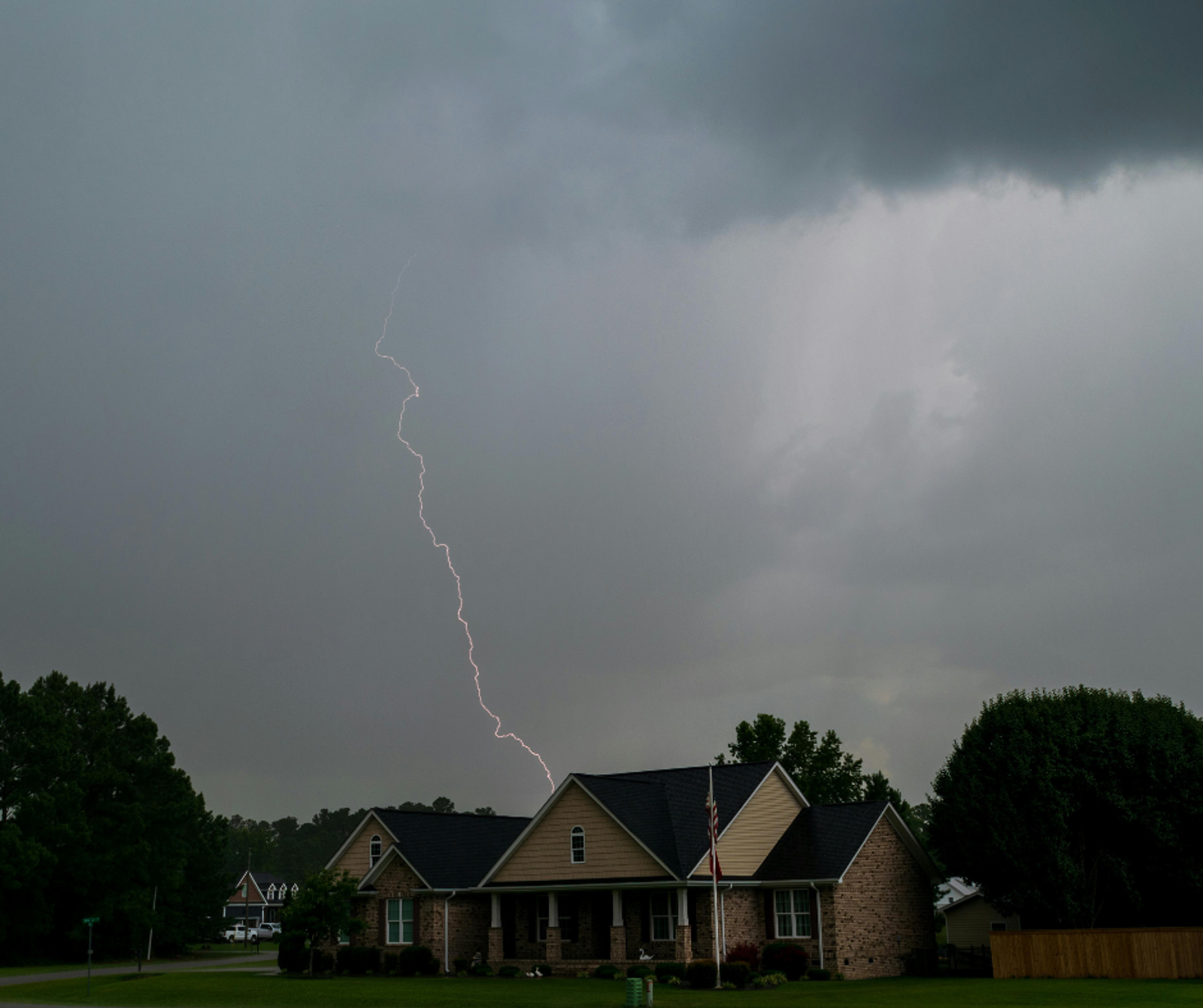What Does Home Insurance Cover During a Summer Storm?

When summer rolls around in the Midwest, we often look forward to cookouts, poolside afternoons, and family road trips. But as many homeowners know all too well, summer is also storm season. Thunderstorms, high winds, hail, and even the occasional tornado can cause sudden and serious damage to your home—sometimes in a matter of minutes.
If you’ve ever asked yourself, "Does my homeowners insurance actually cover this kind of storm damage?" — you’re not alone. Understanding what’s protected (and what’s not) under your policy is key to making informed decisions, minimizing out-of-pocket expenses, and recovering quickly when the unexpected happens.
In this blog, we’ll break down the typical protections included in homeowners insurance during summer storm events, what limitations may exist, and what additional steps you can take to safeguard your home.
Common Summer Storm Threats
Summer storms can be surprisingly destructive, often bringing multiple hazards at once. These include:
- High winds and straight-line gusts that can uproot trees, damage roofs, and knock down power lines
- Hail that can shatter windows, dent siding, and destroy roof shingles
- Lightning strikes that can cause fires or power surges damaging electronics
- Torrential rain leading to basement flooding or water seeping into walls and flooring
- Tornadoes, which—though more rare—can completely level structures in their path
Given these risks, your home insurance should serve as a financial safety net. But that net has limits, and knowing where those are can make all the difference.
What Does Homeowners Insurance Typically Cover?
- Wind and Hail Damage
Damage caused by wind or hail is typically covered by standard homeowners insurance. If shingles are ripped off your roof, siding is torn, or windows are shattered by flying debris, your insurer will likely cover the repairs—up to your policy limits and after you pay your deductible.
Some areas with frequent wind or hail events may have separate deductibles or coverage limits specific to those perils. Always review this section of your policy carefully. - Falling Trees and Branches
Summer storms often knock down trees or limbs. If one falls on your home or another insured structure (like a detached garage or shed), your homeowners policy typically covers both the cost of repairs and tree removal.
However, if the tree simply falls into your yard without damaging anything, most policies will not cover the cost to remove it unless it’s blocking a driveway or access point. - Lightning Strikes and Power Surges
If lightning strikes your home and causes a fire or damages your electrical system, your policy generally covers the associated losses. Similarly, electronics damaged by lightning-induced power surges—TVs, computers, appliances—may be covered under the personal property section of your policy.
To reduce risk, consider using whole-house surge protectors or plugging valuable electronics into surge-protected outlets. - Storm-Related Water Damage
If rainwater enters your home through a storm-damaged roof or broken window, that damage is typically covered. This is different from flooding caused by rising ground water or overflowing bodies of water—those situations require separate flood insurance.
Also note: water backup from sump pump failure or sewer systems is usually not included unless you’ve added optional coverage for it. - Damage to Personal Belongings
Most policies include coverage for personal property like furniture, clothing, electronics, and tools. If a storm damages your belongings—whether by water, fire, or structural collapse—you can file a claim for repair or replacement (depending on whether your policy pays actual cash value or replacement cost).
Create a home inventory in advance to speed up the claims process and ensure proper valuation. - Loss of Use / Temporary Housing
If storm damage makes your home temporarily uninhabitable, you may be reimbursed for living expenses under your policy’s “loss of use” provision. This can include hotel stays, meals, and temporary housing while repairs are underway.
Not Sure What Your Policy Covers?
Every insurance policy is different—and your level of protection depends on your specific coverage choices, exclusions, and add-ons. If you’re unsure whether your policy would protect you fully in the event of a severe summer storm, now’s the time to get clarity. Schedule a policy review with an Ansay & Associates advisor today.
What Isn’t Covered by Homeowners Insurance?
Even comprehensive policies have exclusions. Here are a few common gaps in coverage:
- Flooding from Outside Water
Most standard homeowners policies do not cover flood damage. This includes water from overflowing lakes, rivers, heavy rain accumulation, or melting snow that seeps into your basement. You’ll need a separate flood insurance policy—available through the National Flood Insurance Program (NFIP) or private insurers—to be protected from these events. - Sewer and Drain Backup
Storms can overwhelm city systems, causing water or sewage to back up into your home through drains, toilets, or sump pumps. This isn’t covered by most standard policies unless you’ve added a water backup endorsement. - Neglected Maintenance
If your roof was already deteriorating before the storm hit, or you failed to maintain your gutters, resulting water damage may be denied. Insurers generally do not cover damage caused by neglect or long-term wear and tear. - Detached Structures Beyond Limits
While most policies offer limited coverage for detached structures (like fences, gazebos, or sheds), those limits may not be enough to replace them fully. Review your policy to ensure you have adequate protection for all your property—not just the main dwelling.
How to Prepare for Storm Season
While insurance can help you recover, proactive steps can help minimize damage before a storm ever hits:
- Inspect your roof annually and replace loose or missing shingles
- Trim trees and branches away from your house and power lines
- Secure outdoor furniture and items that could become windborne
- Install surge protectors and battery backups for essential devices
- Consider adding flood or water backup coverage based on your location and risk
Being proactive today could save you from major stress and expense tomorrow.
Peace of Mind Starts with the Right Coverage
You can’t control the weather, but you can control how prepared you are for it. Whether you’ve just purchased a new home or have lived in the same neighborhood for years, reviewing your home insurance coverage before storm season is a smart move.
At Ansay & Associates, our team of local advisors is here to help you understand your coverage options, explain policy limits and exclusions, and identify any additional protection you may need.
Contact us today to speak with a licensed advisor and make sure your policy is ready for whatever summer has in store.
Disclaimer
While these summer safety tips can help minimize risk, no precaution is foolproof. Ansay & Associates provides this blog for informational and educational purposes only. All content on the site is provided in good faith; however, Ansay & Associates makes no representation of any kind, express or implied, regarding the accuracy, adequacy, validity, reliability, availability, or completeness of any content on the site.
TO THE FULLEST EXTENT PROVIDED BY LAW, IN NO EVENT WILL Ansay & Associates, ITS AFFILIATES, OR THEIR LICENSORS, SERVICE PROVIDERS, EMPLOYEES, AGENTS, OFFICERS, OR DIRECTORS BE LIABLE FOR DAMAGES OF ANY KIND, UNDER ANY LEGAL THEORY, ARISING OUT OF OR IN CONNECTION WITH YOUR USE, OR INABILITY TO USE, THE WEBSITE, ANY WEBSITES LINKED TO IT, ANY CONTENT ON THE WEBSITE OR SUCH OTHER WEBSITES, INCLUDING ANY DIRECT, INDIRECT, SPECIAL, INCIDENTAL, CONSEQUENTIAL, OR PUNITIVE DAMAGES, INCLUDING BUT NOT LIMITED TO, PERSONAL INJURY, PAIN AND SUFFERING, EMOTIONAL DISTRESS, LOSS OF REVENUE, LOSS OF PROFITS, LOSS OF BUSINESS OR ANTICIPATED SAVINGS, LOSS OF USE, LOSS OF GOODWILL, LOSS OF DATA, AND WHETHER CAUSED BY TORT (INCLUDING NEGLIGENCE), BREACH OF CONTRACT, OR OTHERWISE, EVEN IF FORESEEABLE. THE FOREGOING DOES NOT AFFECT ANY LIABILITY THAT CANNOT BE EXCLUDED OR LIMITED UNDER APPLICABLE LAW.
Almost there!
We need a little more information from you. Once this form is submitted you will be able to utilize the resource requested.
By requesting this resource, you are agreeing to receive email communications from Ansay. You can unsubscribe at anytime via your preference center.
Not allowed
You are attempting to download a resource that isn’t available to you.








